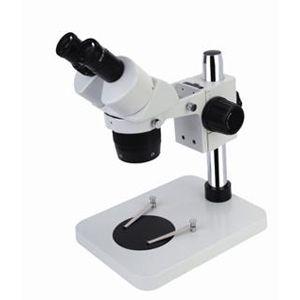A stereo microscope, sometimes referred to as a dissecting microscope, is a kind of microscope in which the specimen is imaged in three dimensions using two different optical paths. A traditional microscope, on the other hand, creates a two-dimensional image using a single optical path. With a magnification range of typically 10x to 40x, stereo microscopes are perfect for observing small objects like cells, plants, and insects. They are also employed in many other disciplines, including forensic science, manufacturing, and quality control. The following factors that make a stereo microscope the best option for needs:
l Magnification: The usual magnification range for stereo microscopes is 10x to 40x. Select a microscope whose magnification range is suitable for the kinds of specimens you intend to observe.
l Price: Stereo microscopes can run you anywhere from a few hundred to several thousand dollars. Consider the price while choosing a microscope.
l Illumination: The majority of stereo microscopes come with built-in lighting. Choose a microscope with an illumination system bright enough to view the specimens you plan to view.
l Working distance: The working distance measures the separation between the specimen and the objective lens. Select a microscope whose working distance is adequate for the kinds of tasks you intend to undertake. For example, a longer working distance microscope is required if you have to perform dissections.
l Ergonomics: Examine the microscope's ergonomics, paying particular attention to the eyepieces and stage. Make sure you can use the microscope you select for extended periods with comfort.
In general, knowing how to choose the ideal stereo microscope for your needs is essential since it can boost productivity, efficacy, and accuracy. It can assist you in protecting your eyes in addition to assisting you in selecting the ideal microscope for your requirements.

